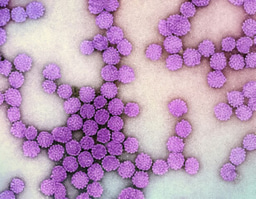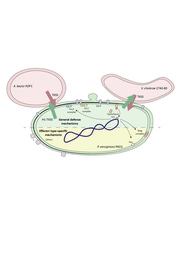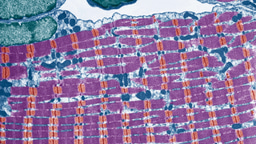A Chat in the Hallway Leads to Discovery
Published in Chemistry, Materials, and Computational Sciences
At Argonne National Laboratory, Hieu and I represent distinct scientific backgrounds — he is a chemical engineer adept at creating complex Python libraries and generating large materials datasets, and I am a chemist/electrochemist. Our offices are in the same hallway in one of the older buildings on Argonne’s campus, and a chance conversation there led to a discovery.
Life is, in many ways, about coincidence: you are rarely exactly who you imagined as a child. Through life’s unexpected turns, we constantly make choices — and those choices, along with the external world — shape who we become.
In this story behind the paper, a chat in the hallway at Argonne sparked a long and fruitful collaboration leading to a significant discovery of effective additives for lithium-ion batteries (LIBs). I was funded through DOE at the time to support the cathode team’s development of additives, and I hold several patents on promising molecules for LIBs. Keep in mind that LIB technology has been maturing for over three decades and is already at a high level of development. Any improvement would be substantial, and I knew of certain compounds that worked well. As a chemist, I can relate their fundamental chemical and electrochemical properties, but I can never predict a formula’s effectiveness — experimentation is always necessary.
Hieu was working on the virtual screening of redoxmers — compounds with reversible reductive and oxidative potential — for flow batteries. His search space could contain as many as a million compounds.
Typically, in the mornings, under the stimulation of coffee, I would walk through the hallway to get water from the fountain. One day, Hieu was there as well. Our “water cooler chat” raised an interesting question: for something as mature and stringent as LIBs, could machine learning models be effective with a limited dataset?
My specialty is in chemical design, and with over a decade working with LIBs, I have developed a strong understanding of how chemicals behave within them. I suggested we could obtain 20 sets of high-quality data. However, it is important to note that while inexpensive instruments can generate LIB data, it is generally low quality and does not account for interfaces or degradation processes. Hieu thought it was worth a try.
We further characterized the degradation mechanism, and he was able to build machine models to predict performance of LIB additives. More interestingly, he was able to use the data to predict the functionalities that would increase or decrease the impedance or cycle capacity — a result that aligned with my own chemical intuition.
Needless to say, it was very rewarding to see the work ultimately published as a paper. Projects come and go, but the research experience and the people you get to know is a valuable experience.
Follow the Topic
-
Nature Communications

An open access, multidisciplinary journal dedicated to publishing high-quality research in all areas of the biological, health, physical, chemical and Earth sciences.
Your space to connect: The Fuel cell technologies Hub
A new Communities’ space to connect, collaborate, and explore research on Electrochemistry, Chemical Engineering, and Fuel Cells!
Continue reading announcementRelated Collections
With Collections, you can get published faster and increase your visibility.
Women's Health
Publishing Model: Hybrid
Deadline: Ongoing
Advances in neurodegenerative diseases
Publishing Model: Hybrid
Deadline: Dec 24, 2025





Please sign in or register for FREE
If you are a registered user on Research Communities by Springer Nature, please sign in